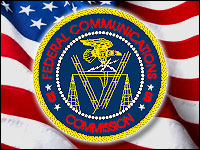
The Federal Communication Commission’s national broadband plan, formally unveiled this week, certainly has lofty goals: Provide greater access to broadband, increase broadband speeds, help establish a national emergency network, help improve the economy and ensure the U.S. leads the way in digital technology.
However, the FCC’s plan may be even more complex to implement than it appears. Apart from possibly kicking up new battles with the private sector over what the government can and cannot do, the plan raises questions; for instance, how will the private sector finance the infrastructure it needs to build?
Other issues, such as privacy, security and identity theft, have yet to be addressed.
Who Needs the Speed?
The plan points out that many other nations, such as South Korea, Japan, Australia, Sweden, Finland and Germany have developed broadband plans. “We should be the leading exporter of broadband technology — high-value goods and services that drive enduring economic growth and job creation,” the plan states. “A high-performance America cannot stand by as other countries charge into the digital era.”
A good thought, but is anyone in the U.S. listening? “I’m not sure anybody cares,” Maribel Lopez, founder and principal analyst at Lopez Research, told the E-Commerce Times. “I don’t hear this huge uproar from the populace saying they’re going to need more bandwidth. I do hear an uproar about our laying off teachers all over the country.”
Saving Face
Why are the other developed countries the FCC named outpacing America in broadband? Perhaps because they’re operating under different conditions. The countries it listed as leaders in broadband communications differ significantly from the United States in that their markets have less competition. For one thing, their governments, through postal and telecommunications agencies or departments, have standardized the communications technology used — GSM.
Further, these are all smaller countries than the U.S., with few of the widely disparate geographical conditions prevalent in the States. They also have political systems that are less likely to allow local governments to apply their own policies whether or not these are in line with those of the federal government. Finland’s communications, for example, are largely dominated by Nokia, which is based in that country.
“I think the FCC’s suffering from broadband envy because other countries have higher-speed broadband networks than we do,” Lopez said. “The OECD talks about how all these other countries have this amazing broadband to the home, but these projects are all funded by government dollars. The only way to get providers to do this is to have taxpayers fund these projects.”
Riling Up the Private Sector
Among other goals, the national broadband plan seeks to provide high-speed Internet access to every American, build out a network for first-responders to access, and make America the global leader in communications.
In order to provide high-speed Internet access, the FCC may need to broaden its powers. These could include the development of broadband performance standards; a review of its wholesale competition regulations to ensure businesses using broadband can offer input; the establishment of technical broadband measurement standards; and greater control over special access rates, terms and conditions.
The FCC also aims to take some of the spectrum allocated to television broadcasters and re-allocate it to wireless service.
Private sector lobbyists are already rallying political opposition, at least to the question of reallocating spectrum assigned to TV broadcasters, and more trouble is predicted over this issue. The private sector is also likely to clash with the FCC over other areas wherein the Commission seeks to widen its powers.
Where’s the Money?
The cost of developing a fiber optic network is substantial, and making the money back is difficult, Lopez pointed out. “I don’t see carriers going to Wall Street and asking for (US)$4 billion to develop a fiber network in these times,” she said.
For example, when Verizon began working on its FiOS project to bring fiber optic to the home back in 2004, there was “a great deal of contention” within the company about how it was going to monetize the service, Lopez pointed out.
FiOS served more than 15 million households by the end of 2009, Verizon spokesperson Heather Wilner told the E-Commerce Times. “Our strategy is two-fold: Open new markets and penetrate existing markets more deeply.” She did not, however, address the monetization issue.
Don’t worry about the money, Mark Cooper, research director of the Consumer Federation of America, told the E-Commerce Times. “Most of the plan is self-financing, and the commission has gone out of its way to make this clear,” he explained.
The FCC will pay for the construction of the national public safety network, which it wants to set up, by auctioning off a block of spectrum called the “D” block, Cooper pointed out. This block went unsold in the last wireless spectrum auction in 2008, sparking demand for a probe into the reasons why.
Further, the national broadband plan outlines ways in which to keep the costs down.
These including cutting the rates communications companies pay to attach their wiring to utility poles; streamlining and speeding up the process of this attachment; and coordinating the laying of fiber optic networks with other infrastructure projects so that a trench is dug only once and the costs are shared among participants.
Safety, Security and Privacy
Another potential minefield lies in the issue of security. Will the faster speeds make it easier for hackers to conduct their nefarious deeds? Will they help botnets spread faster and steal more information from people’s PCs, especially those who are new to the Internet and not familiar with safer surfing practices?
Will putting medical and health data online make it easier to steal their information?
Will corporations and private citizens have to spend more to maintain security?
Expect more debate on these issues as people and businesses digest the implications of the National Broadband Plan.
























































Social Media
See all Social Media